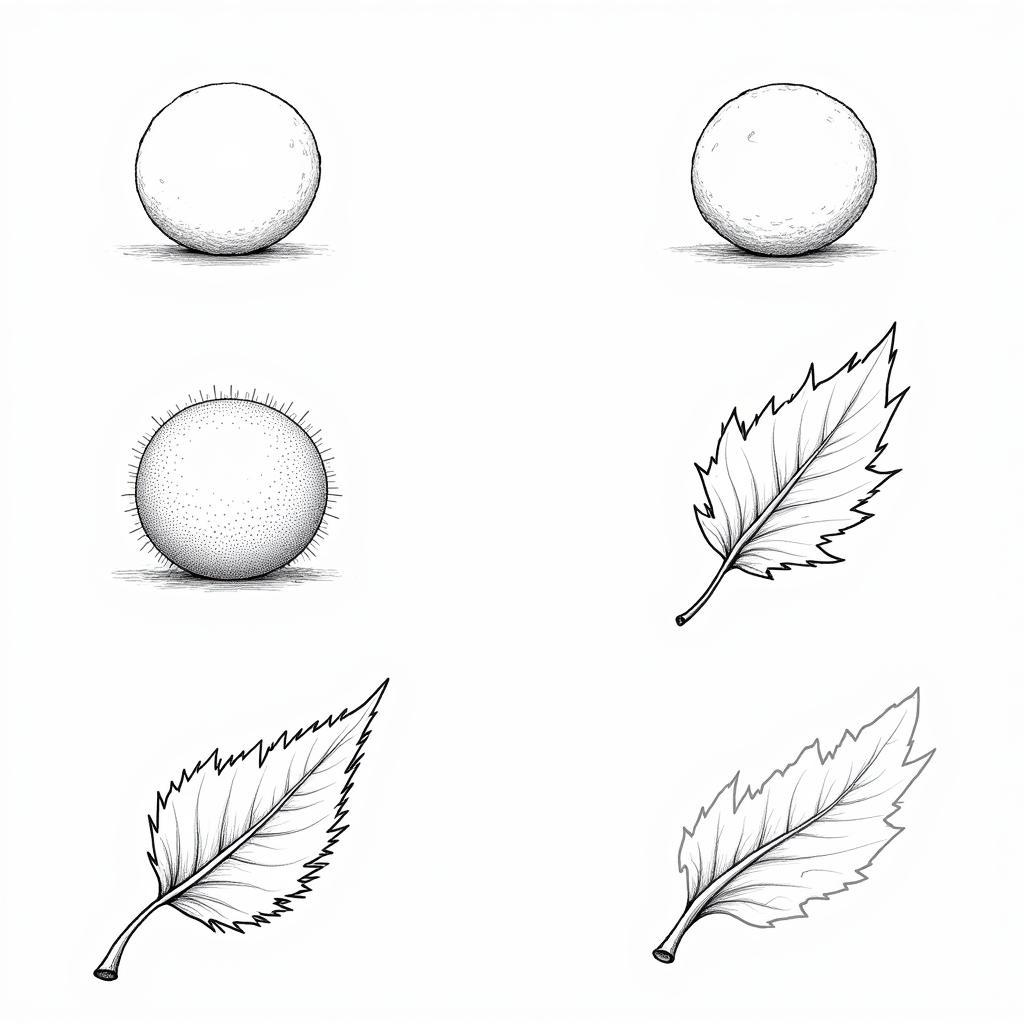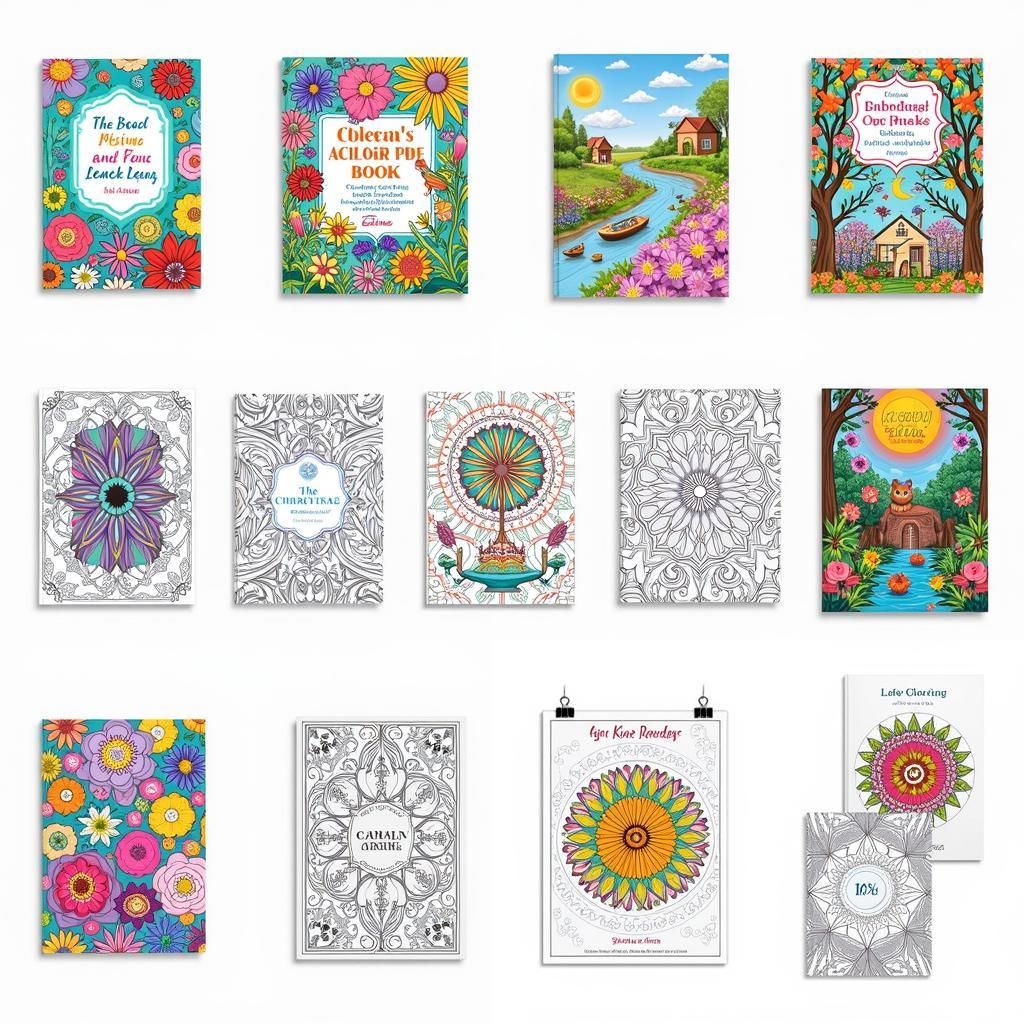Coloring in a coloring book is more than just a childhood pastime. It’s a relaxing and creative activity that can be enjoyed by people of all ages. Whether you’re looking to de-stress, explore your artistic side, or simply have some fun, learning how to color effectively can enhance your experience and bring your creations to life. From choosing the right tools to mastering various techniques, this guide will provide you with everything you need to know to transform a blank page into a vibrant masterpiece. Want to learn how the magic happens? Check out how does the magic coloring book work.
Choosing Your Coloring Tools
The materials you use can significantly impact your coloring experience. While basic crayons or colored pencils are a great starting point, exploring different options can open up a world of creative possibilities.
- Colored Pencils: These versatile tools offer a wide range of colors and allow for precise control and layering.
- Crayons: Ideal for bold, vibrant colors and covering large areas quickly.
- Markers: Alcohol-based markers are popular for their blendability and vibrant hues, while water-based markers are great for a softer, more subtle look.
- Gel Pens: These pens offer opaque coverage and are perfect for adding details and highlights.
- Watercolors: For a more painterly approach, watercolors can create beautiful washes and gradients.
Mastering Coloring Techniques
Once you have your tools, it’s time to explore different coloring techniques.
- Shading: Creating depth and dimension with shading is essential for making your artwork pop. Experiment with different pressures and layering techniques to achieve realistic shadows and highlights.
- Blending: Smooth transitions between colors can add a professional touch. Try blending colored pencils with a blending stump or using a solvent for markers.
- Stippling: This technique involves creating a textured effect by using small dots of color.
- Hatching and Cross-Hatching: These techniques use parallel lines or intersecting lines to create shading and texture.
 Different Coloring Techniques Examples
Different Coloring Techniques Examples
Exploring Different Coloring Styles
From realistic to abstract, there’s a coloring style for everyone. Don’t be afraid to experiment and find what works best for you.
- Realistic Coloring: Focus on creating lifelike depictions by paying attention to light and shadow.
- Abstract Coloring: Embrace bold colors and patterns to create unique and expressive artwork.
- Geometric Coloring: Use geometric shapes and patterns to create intricate designs.
- Doodle Art Coloring: Combine coloring with doodling to add a whimsical touch. Looking for inspiration? Consider [a twisted tale coloring book](https://colorbox.com.vn/a-twisted tale-coloring-book/).
How to Color in a Coloring Book for Beginners
Getting started with coloring is easy! Here’s a step-by-step guide:
- Choose your coloring book and tools. Select a coloring book that appeals to your interests and the coloring tools you want to use.
- Select a design. Choose a design that you find inspiring and that suits your skill level. If you’re a fan of dragons, check out how to train your dragon coloring book pages.
- Choose your colors. Select a color palette that complements the design.
- Start coloring. Begin by filling in large areas with your chosen colors.
- Add details and shading. Once the base colors are in place, add details and shading to enhance your artwork.
How Do I Choose the Right Coloring Book?
Choosing the right coloring book is crucial for a fulfilling coloring experience. Consider your interests, skill level, and preferred coloring style when making your selection. There are coloring books available for every taste, from intricate mandalas to whimsical illustrations. You can even find mini coloring books like a brighter year mini coloring book for a quick creative escape. Don’t be afraid to explore different themes and styles to discover what resonates with you. Where to find your perfect match? Visit where can i buy adult coloring books.
 Different Types of Coloring Books
Different Types of Coloring Books
“Choosing the right coloring book is like choosing the right paint color for a room. It sets the mood and inspires the creative process,” says renowned art therapist, Dr. Emily Carter.
Conclusion
How To Color In A Coloring Book effectively boils down to experimentation, practice, and enjoying the process. Embrace your creativity and let the colors flow! From choosing the perfect tools to mastering various techniques and styles, the journey of coloring is a rewarding one. Don’t be afraid to make mistakes and explore your artistic potential.
FAQ
- What are the best colored pencils for coloring books?
- Can I use markers in coloring books?
- How do I prevent bleed-through when coloring?
- What are some good coloring book recommendations for beginners?
- How can I improve my coloring skills?
- What are some creative ways to use colored pages?
- Where can I find inspiration for coloring?
Common Coloring Situations and Questions
- Problem: My colors look dull. Solution: Try layering your colors and using a blending tool to create richer hues.
- Question: Can I mix different coloring mediums? Answer: Yes, experiment with combining different mediums to create unique effects.
Further Exploration
For more tips and inspiration, explore our other articles on coloring techniques and art supplies.
Need Help?
For further assistance, contact us at Phone: 0373298888, Email: [email protected] or visit our address: 86 Cau Giay, Hanoi. Our customer service team is available 24/7.